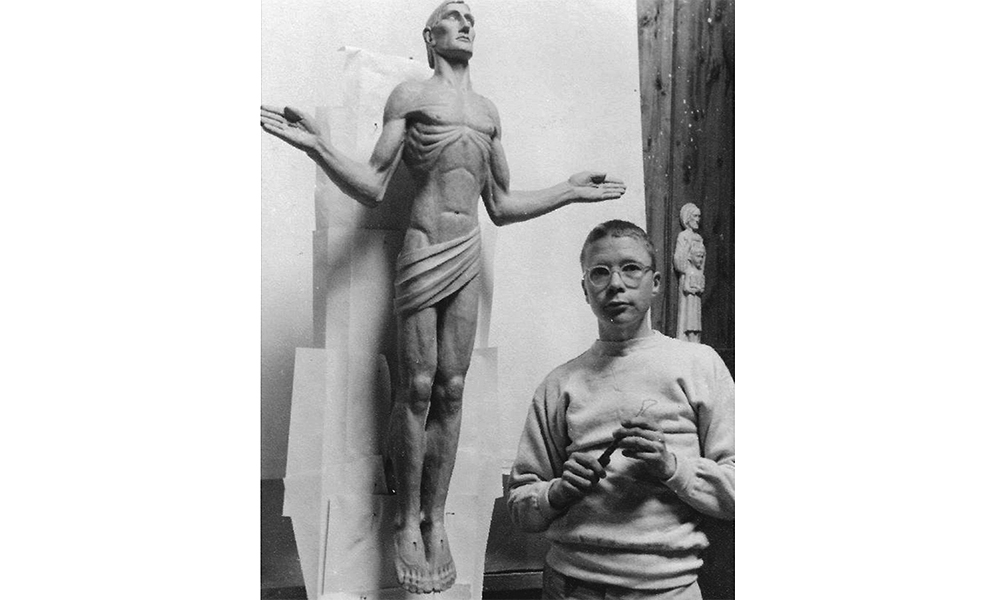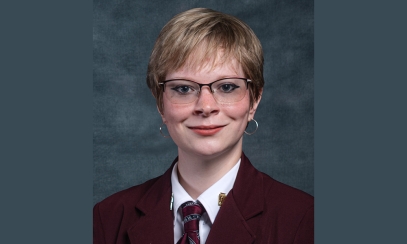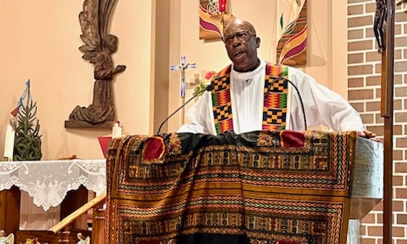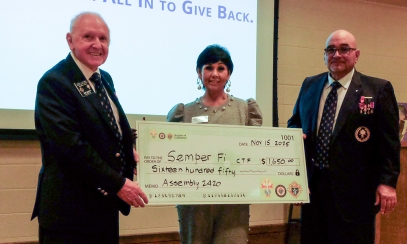
Last lay brother of St. Bernard Abbey peacefully goes home to the Lord
It is with heavy hearts that Abbot Marcus Voss, O.S.B., and the Monks of St. Bernard Abbey announce the death of their confrere, The Venerable Brother Jude Henry Johnston, O.S.B., who went to God on June 19.
Henry Odie Johnston, Jr., was born on Jan. 19, 1933, in Florence, Alabama. The young Henry was reared by his parents in a Catholic home. His father, Dr. Johnston, practiced the art of dentistry. In a time of racism and segregation in the South, Henry was proud that his father would often work after supper to provide free dental care to African Americans, who had little other access to such care.
While little is known of his arrival at St. Bernard, Henry attended St. Bernard Preparatory School, graduating in 1951. He then entered the novitiate in 1953 with the intent of becoming a lay brother and received the religious name Jude. Brother Jude made his first profession on Aug. 15, 1954. Being that he had a strong devotion to the Blessed Mother and a lifelong fidelity to the rosary, it is fitting that his profession was made on the Solemnity of the Assumption of Our Lady. In 1957, Brother Jude made simple perpetual vows. Despite the later possibility of taking solemn vows, Brother Jude chose to remain in simple vows.
Brother Jude was gifted with his hands and had a passion for art, which seemed to flow naturally from him. His artistry first manifested itself through his work in the tailor shop as a young monk, where he expertly learned to make habits and vestments. Nonetheless, this work was short-lived, as he was subsequently made Refectorian and dishwasher. It was during his breaks in this duty that he began to study ceramics and work in the “mud room” with Father Timothy Harrison, himself a gifted artist. Realizing Brother Jude’s skill in the art of ceramics and sculpting, Abbot Bede assigned him to apprentice under Herbert Jogerst, the German sculptor commissioned to carve the statues in the Abbey Church. It was during this apprenticeship that Brother Jude carved a bust of our Brother Joseph Zoettl, creator of the Ave Maria Grotto. Despite the fine quality of this bust, which can still be seen today in the Grotto Shop, Brother Jude referred to his work as “my first awkward attempt at portraiture.
This self-critical condescension was something that followed Brother Jude for much of his life. Brother Jude studied at and had numerous degrees from universities such as Notre Dame, Auburn, and Yale in the fields of sculpture, photography, engineering, architecture, and artistic design. Despite his exceptional artistic talent and skill as a teacher, including at Yale and Southern Benedictine College, Brother Jude struggled to come to terms with his life in the community and the utilization of his talents in the service of St. Bernard. Because of this inner conflict, he lived and worked outside the monastery for a time. And yet, it is clear from his correspondence during these difficult days, that despite his frustration and sense of uselessness, Brother Jude could not separate himself from the monastery. His love for St. Bernard was enduring and woven deep into the fabric of his identity – sometimes deeper than the eye could see. Eventually returning to the monastery, he continued to produce art and write proposals for projects and plans which he thought would better the campus and apostolates. In later years, he faithfully brought meals to the monks in the Infirmary. This quiet service to the sick members of the community was indicative of Brother Jude’s attention to the poor and the least.
Despite Brother Jude’s somewhat complicated history in the community, old age softened his disposition considerably. His cynicism, which had come from years of frustration and sometimes fraught relationships with superiors, began to wash away. During the nearly four years he resided in the Monastic Infirmary, Brother Jude enjoyed regular visits from his confreres and integrated more deeply into the life of the community. The love and care which he received from his confreres and infirmary personnel during those last years of his life was certainly a healing balm, both to Brother Jude and the community itself. Shortly before his death, Brother Jude remarked to one of the brethren, “The community has been so good to me.
Having received the Anointing of the Sick, the Apostolic Pardon, and Holy Viaticum, Brother Jude died peacefully in the Monastic Infirmary in the early morning hours of June 19. He was surrounded by his confreres, who had been keeping vigil at his bedside. At the time of his death, Brother Jude was the senior monk of the house, both in age and profession, and the last lay brother at St. Bernard.
Brother Jude’s life, though not considered to be an easy one, is a testament to monastic stability. Despite struggles both internal and external, ultimately Brother Jude chose to remain a monk of St. Bernard Abbey. It was his perseverance in that choice which allowed so much healing and transformation in the latter years of his life. As one monk remarked, “Brother Jude died gracefully.” But perhaps more importantly, his ongoing conversatio morum was due to the work of the Holy Spirit, Who blows mysteriously where He wills. It is thus fitting that above the door to our Chapter Room hangs a wood-carved Dove of the Holy Spirit sculpted by Brother Jude, with the simple inscription: Veni Sancte Spiritus.



